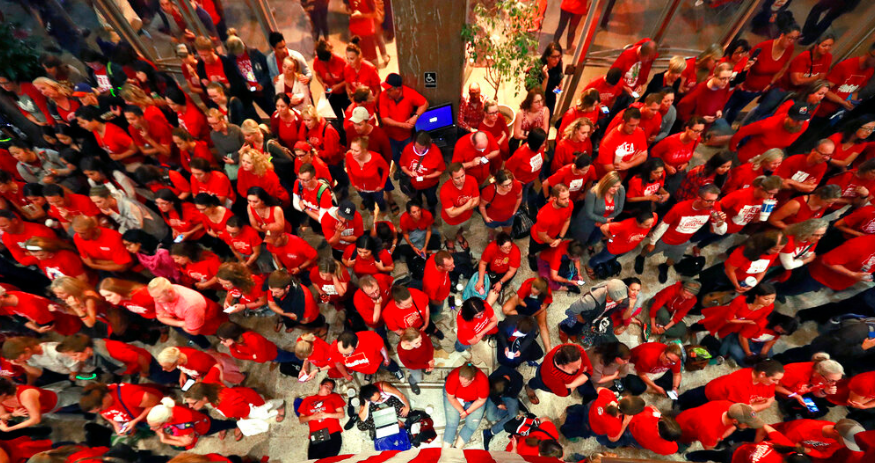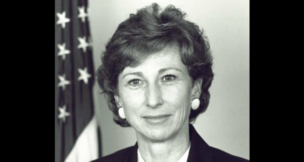New poll spurs Horne’s push for punishing schools that don’t support teachers
Howard Fischer, Capitol Media Services//September 3, 2024//[read_meter]
New poll spurs Horne’s push for punishing schools that don’t support teachers
Howard Fischer, Capitol Media Services//September 3, 2024//[read_meter]
So why are teachers leaving the profession?
Yes, there’s the perennial issue of pay.
But a new survey released Tuesday by the state Department of Education of those who did not return to teaching this year finds some other factors are bigger drivers, including burnout, lack of respect and that student behavior and discipline problems were an issue at their school last year.
And state schools chief Tom Horne said he believes the thing that will most help keep teachers in the classroom is having the administration back their decisions when they discipline students. And that includes burnout.
“Wouldn’t you be burned out if you had to teach a class where the kids were acting up and the administrators weren’t doing anything about it?” Horne told Capitol Media Services. “I wouldn’t last a year.”
He is using the report to make a new push for legislation designed to penalize districts that don’t back their teachers.
Horne backed a proposal earlier this year introduced by Sen. John Kavanagh, R-Fountain Hills, which would have reduced the academic standings of schools whose administrators do not impose discipline at least three out of every four times requested by a teacher.
“I’ve heard from too many teachers where they write up referrals, and nothing is done,” said Rep. Matt Gress. R-Phoenix, during debate on the measure. “And many kids are able to run roughshod all over the school and distracting the learning from too many kids that are wanting to get an education.”
The enforcement mechanism behind all this would have required the state Board of Education to lower a school’s letter grade if it did not implement disciplinary actions in at least 75% of the total number of student discipline referrals submitted by teachers in a single year. Only if a school had a “reasonable justification” for falling below that figure would there be no penalty.
It cleared the Republican-controlled Senate on a party-line vote but died in the House when some Republicans refused to go along.
“Shame on the legislators who voted against it,” Horne said.
Several Democrats said this is an issue that should remain a local concern. But Rep. Nancy Gutierrez, D-Tucson, also said during the debate that she saw a darker motive in the proposal.
She pointed out that each school gets a rating of A through F, one that is based on academic performance and year-over-year improvement. Parents can use those ratings to determine whether to send a child there.
“It is my opinion that this bill has been put forward in order not to support teachers but in order to make it so that there’s an easier way to have more public schools with D and F grades to support some of the rhetoric that we hear that public schools are failing our students,” Gutierrez said, an argument that has been used by some to support the use of tax dollars to let parents send their children to private or parochial schools.
Horne acknowledged that the threat of lower grades is designed to get the attention of schools – and parents.
“Believe me, districts care about their grades,” he said. “If you give them a grade incentive to support the teachers on discipline, they’ll do it.”
Rep. Jennifer Pawlik, D-Chandler, said during the debate over the legislation that she is glad that Horne is “listening to teachers.” Pawlik, a former teacher, agreed that teacher turnover goes beyond salaries.
“A lot of people are leaving right now because classroom behaviors have accelerated,” she said. “And it’s really hard to be a teacher right now.”
But Pawlik said what was in the Kavanagh legislation was not an incentive but “punitive,” something she said is not the answer.
Kavanagh said Tuesday he still supports the goal but is “open” to alternate ways to encourage administrators to support the discipline imposed by teachers.
The new report released Tuesday by the Department of Education focuses less on pay – issues generally outside the control of school districts and boards – and more on things that can be done at the local level. And that deals largely with what it calls “teacher voice.”
“If teachers truly have input into the creation of the systems, procedures, and expectations at their schools, they feel more empowered to achieve desired outcomes,” the report says. “Teachers feel valued and work together to find solutions.”
That, in turn, the report says, creates not just long-term satisfaction but also a “commitment to the field of education.”
“A greater retention rate for not only the campus, but the district takes place when utilizing the strategy of teacher voice,” it says.
The email survey was sent out to more than 5,900 teachers who did not return this year.
Of that, 2,482 completed it. But about 1,500 responses were removed because they were ineligible to participate because the reasons they left teaching were unrelated to what they survey was about, reasons like retirement, going into administration or accepting a mentoring job.
Participants were given more than two dozen factors from which to choose and told to rate them as whether they agreed these were reasons they left.
More than 71.2% said they agreed or strongly agreed that burnout was a factor.
Some 69.1% gave a similar rating to not feeling respected, with almost 64% citing student behavior.
And wanting a higher salary was cited by 62.1%.
Other factors that departed teachers said they agreed were factors include:
– Too many intrusions on teaching time;
– Dissatisfied with teaching as a career;
– Deciding to pursue a position other than a K-12 teacher;
– Too many students in a class.
The results, said Horne, are not exactly a surprise. The same issues have been cited year after year in surveys by other organizations.
In fact, a task force on teacher retention formed by Gov. Katie Hobbs reported in December – before this year’s legislative session – that solutions include raising salaries, cutting workloads and reducing stress.
That report found that teacher turnover comes with a cost to students.
It cited studies that teacher effectiveness continues to steadily increase until the 12th year, with the largest gains in student achievement occurring during a teacher’s first five years in the classroom.
But it also found that in Arizona a third of all teachers have four years or less experience, with fewer than half having 10 or more years in the classroom.


















